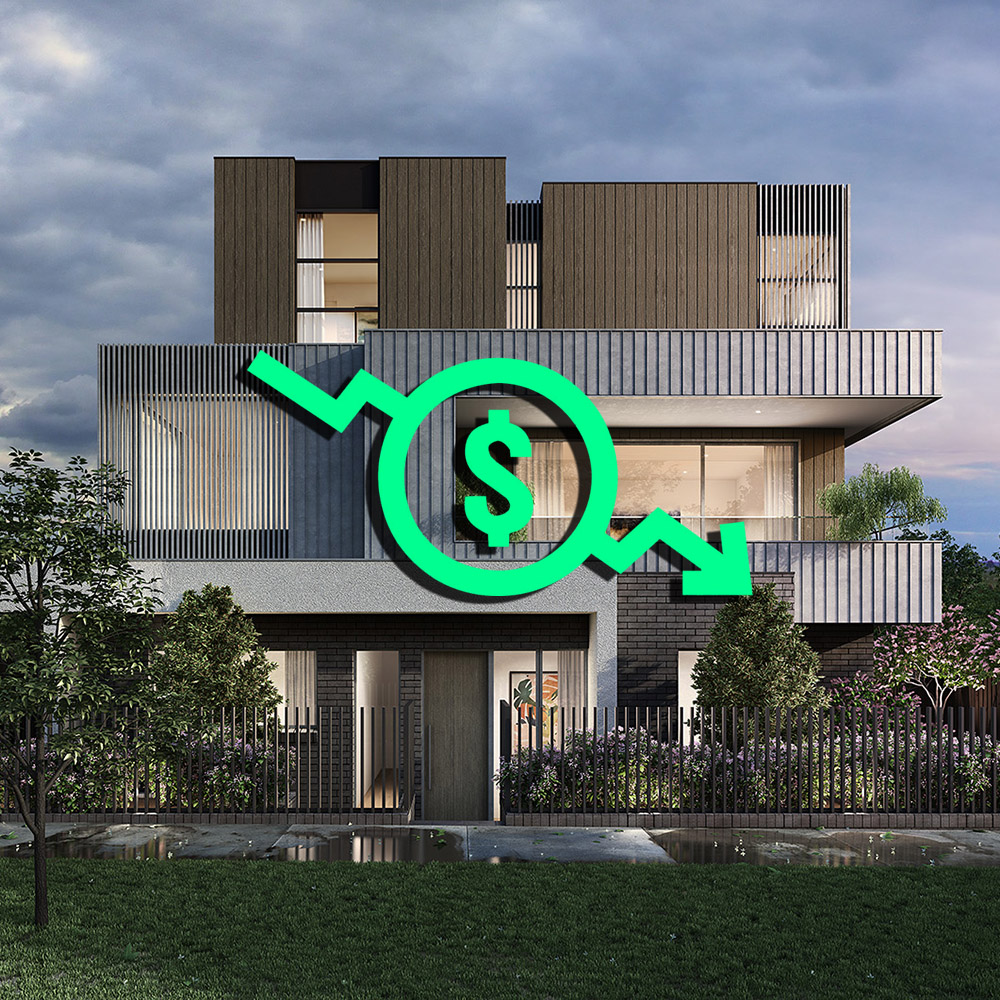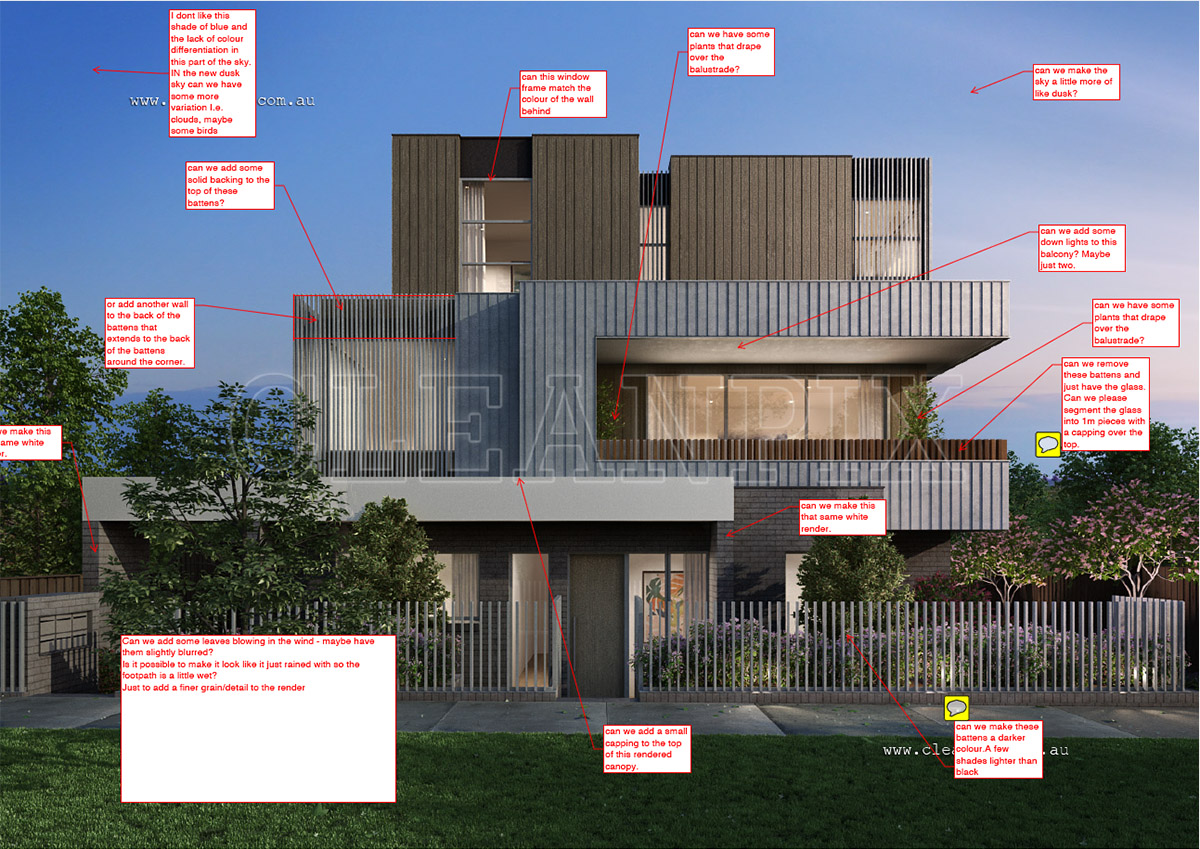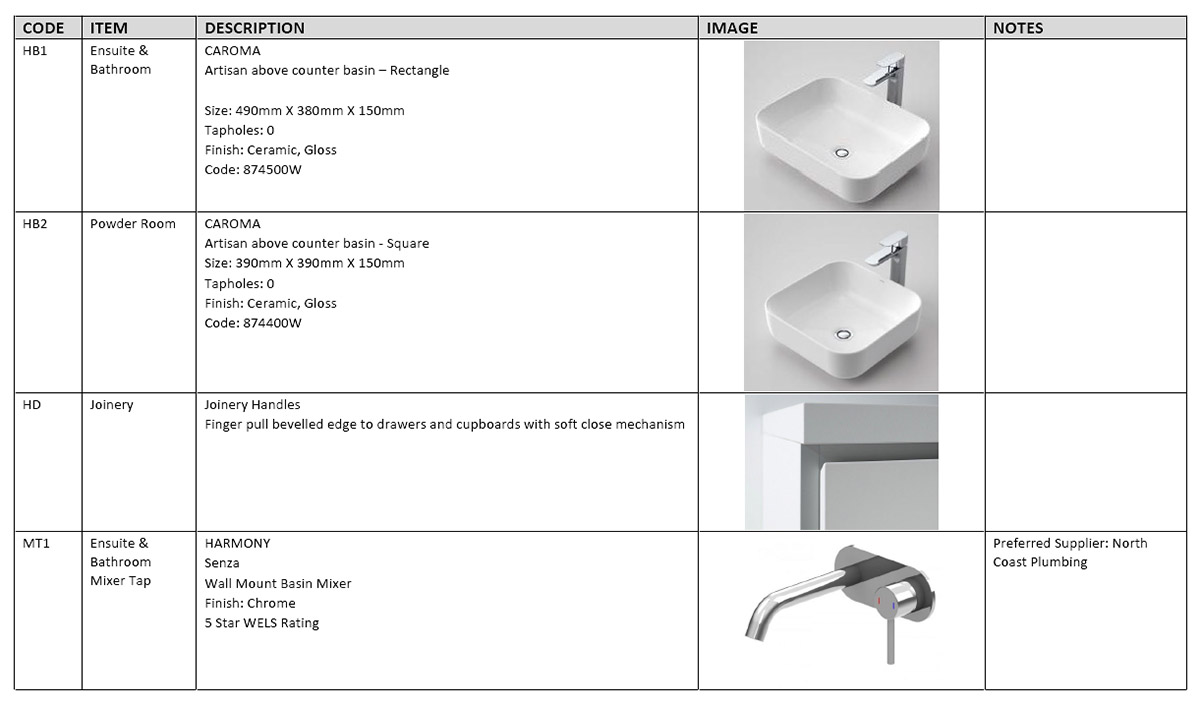5 Tips to Avoid Architectural 3D Renders Cost Overruns
Written by Cleanpix Graphics

A Guide for 3d Artists and Their Clients
When it comes to the production of 3d rendered artwork for real estate marketing, no one wants to pay more than they have to. Naturally, higher quality costs more money but the process may start to feel like a never-ending money pit for the client when every revision request that they make incurs additional fees.
While this scenario may be welcomed by some 3d artists since they're earning more than expected, requesting additional fees is always an awkward discussion to raise with a client.
There is also a good chance that this situation will alienate the client from giving repeat business in the future and earning the studio a reputation as being overpriced and unreliable.
Here are some tips that may help architectural visualisation studios and their clients avoid unforseen cost overruns on their next 3d rendering project.
1. Jumping the gun
Property developers are understandably anxious to start advertising their upcoming product for sale as soon as possible. The longer it takes to sell, the greater the holding costs.
Quite frequently developers will engage a studio to commence working on the artist's impressions for the development before receiving city council planning approval for their proposed design concept.
This is always risky.
There is a high probability that planning permission may only be 'approved with conditions'.... Or worse yet, denied outright due to resident objections or other planning issues.
In this situation, if work on the 3d renders has already been commenced or fully completed, additional revision rounds will be required to update the 3d model and re-render the images to reflect the new design changes. In the worst case scenario it may even be necessary to completely scrap the 3d model and redo the images from scratch.
Obviously this extra work would fall outside the scope of the original 3d visualisation budget, resulting in substantial added fees.
Clients must be aware of the potential risk of committing to a 3d rendering project too early. The bigger and more complex the project, the greater the chances that several iterations of architectural design revisions will be required before a planning permit is granted.
3d artists should always make a habit of confirming with the client (when quoting a 3d renders job) whether the supplied sets of drawings have been approved by the appropriate municipality.
Additionally, they should warn the client of the potential risk of cost overruns if they insist on commencing the 3d renders project while planning approval for the proposed design is still pending.
2. Vague feedback
Once the project is underway, the artist or studio will commence sending through work-in-progress image submissions to the client for review and approval. Thorough client review and clear and detailed feedback communication is vital to the smooth progress of the project.
A common issue resulting in the need for additional rounds of revisions in the latter part of the project, is the lack of high quality client feedback and mark-ups.
Phoning the 3d renders supplier to verbally discuss the required changes is always helpful but needs to be backed up by a set of mark-ups or written email summary listing the requested revisions. Without a written record there is a good chance that some changes will be omitted from subsequent submissions.
The ideal mark-up should be a copy of the progress renders with typed text annotations, indicating elements of the image/s that require revision. The text comments should be supported with good quality reference images (colour swatches, material samples, furniture examples etc.) where applicable.

Above: An example of a client mark-up with text annotations requesting various revisions.
Clients should aim to be as specific as possible with their feedback instructions. When it comes to requesting an architectural design change - i.e. increasing the thickness of the kitchen bench top - state the precise dimension. Instead of making a comment like 'make bench top a bit thicker', it is better to write something like 'increase bench top thickness by 50%' or 'make bench top 20 millimetres thicker'.
When it comes to appraising the furniture, styling themes and landscape planting, try to avoid vague comments like 'can we use a nicer sofa in the living room?'.
In this scenario, if you'd like to see a certain type of sofa, send the 3d artist reference images of the preferred style of sofa. Better yet, providing the manufacturer and model name of the piece will really help to cut out the guess work.
In order to streamline the process even further, it is always best practice to supply the 3d artist/s with specifications and reference images for the preferred garden plants, furniture, fittings and material swatches before the project is commenced.

Above: An example of a bathroom fixtures specification with reference images supplied by a client.
3. Hasty proof reviews
Clients who are trying to manage a real estate development project are incredibly busy people.
A common issue that often arises when clients are in a rush to get the 3d renders finalised is to quickly skim through the preview submissions and give the studio approval to proceed with the next phase... Only to realise later that there were some aspects that required tweaking.
While some areas of the artwork may be incomplete since they are still a work-in-progress, it is better to confirm with the studio that there will be further refinement applied to the final version of the image/s.
It's always better to allow an extra 1 or 2 days to make a thorough examination of the submitted proofs, flagging any elements in the images that require revision as early as possible rather than 2 or 3 rounds later in the process.
The client may find that backtracking at an advanced stage of the 3d visualisation process can incur additional variation fees from the studio. It is important to avoid making hasty approval decisions at key milestone moments.
4. Review by committee
It is quite common and reasonable that the client may wish to involve additional stakeholders in the 3d renders review process. These parties may include business partners or other colleagues from the client's company, the architect, interior designer or the real estate agent.
This can be a really tricky issue to manage, with the involvement of added people potentially leading to some confusion or misdirection for the 3d rendering studio. If not handled properly from the beginning of the project, this can necessitate additional rounds of artwork revisions before everyone is satisfied, resulting in additional unexpected costs.
Unfortunately when it comes to something subjective like appraising 3d artist impression images, everyone has a personal preference that tends to differ to some degree from one person to another.
One of the main challenges that arises is finding the best solution to keep everyone involved happy and up to date with the progress and direction of the project.
A good option for managing the situation is to maintain a single person (at the client end) as the point of contact with the 3d artist or studio throughout the duration of the project.
This individual would be responsible for accepting all the feedback from the different stakeholders, ensuring party consensus and collating a unified set of mark-ups for each round of progress submissions.
This way everyone has the opportunity to add their comments to the pool before the combined group or an individual with final authority decides which revision requests are included in the mark-up.
Consequently, the 3d artist will not be confused by multiple sets of mark-ups coming through from different parties, avoiding the possibility of encountering conflicting revision requests.
5. Know the terms & conditions
Clients should always check how many rounds of revisions the 3d studio includes in their quoted price. If the 3d renders quote does not mention the details, it is always a good idea to confirm with the studio what they included in their price and what the client should expect to see at various stages of the proofing process.
A reputable 3d rendering studio that provides a good quality service will generally include at least 3 rounds of proofing in their quoted price.
Not all services are the same however and clients can find themselves paying more each time they make changes if not careful.
It is also a good idea to verify if the price that the studio is quoting is based on their use of stock library assets. Clients who wish to feature specific furniture or styling accessories in their artwork, may find that some 3d rendering studios will charge additional fees for sourcing or creating these pieces if they do not possess them in their 3d model collections.
For 3d artists it is always good practice to create an outline document that can be supplied with the quotation which would brief the client on the submission and review process, what to expect to see at each round of proofing and a checklist of CAD files and schedules that the client needs to supply before 3d modelling work can commence.



